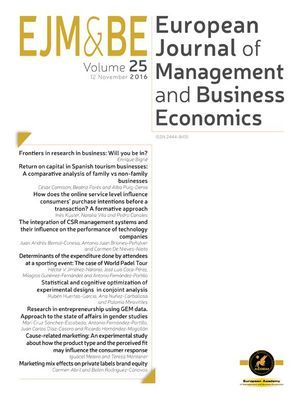Este trabajo analiza la preferencia de las empresas tecnológicas por adoptar o no una vinculación a largo con sus proveedores cuando deciden subcontratar actividades de su proceso de innovación. Con base en la teoría de los costes de transacción y en la teoría de la dependencia de recursos, se argumenta que esta elección estará determinada por los atributos del servicio subcontratado y por la necesidad de las empresas de asegurarse la disponibilidad de los recursos externos a largo plazo. Los datos obtenidos tras analizar 90 acuerdos de subcontratación de servicios de I+D, de una encuesta realizada a empresas de la Unión Europea (UE) y Estados Unidos que operan en sectores intensivos en tecnología, muestran que estas sólo prefieren vincularse a largo plazo con su proveedor cuando la complejidad del servicio así lo requiere o cuanto mayor sea el nivel de interdependencia de recursos entre el cliente y el proveedor. En otras circunstancias, prefieren adoptar acuerdos a corto plazo con el fin de mantener una estrategia tecnológica flexible, preferencia que resulta mayor para las empresas tecnológicamente más competentes, y especialmente si la decisión de subcontratación está motivada por cuestiones de eficiencia operativa o por el deseo de superar la desventaja del extranjero en su expansión internacional.
We analyze the preference of technological firms for long-term relationships, instead of short-term contracts, as they engage in R&D outsourcing agreements with external partners. We draw from transaction cost theory and resource dependence theory to argue that this choice will be mainly determined by the attributes of the R&D service outsourced, and the company's need to secure the availability of external resources on a long-term basis. Using original international survey data on 90 R&D outsourcing agreements by European and U.S. companies operating in technology-intensive industries, we find that long-term relationships are preferred when the attributes of asset-specificity and frequency are present and when the level of resource dependence between the exchange parties increases. On the other hand, companies seem to prefer short-term contracts in order to follow a flexible R&D sourcing strategy. This preference appears to be higher for those companies that are more technologically competent, and when the underlying motive for outsourcing the R&D service is increasing operational flexibility, or overcoming the liability of foreignness when entering new markets.
Versiones previas de este trabajo han sido presentadas en las siguientes reuniones científicas: XXI Congreso Nacional, Asociación Científica de Economía y Dirección de Empresas (ACEDE); Organizational Design Perspectives on Offshoring workshop organizado por la Copenhagen Business School; y Strategic Management Society Meeting 2011.




